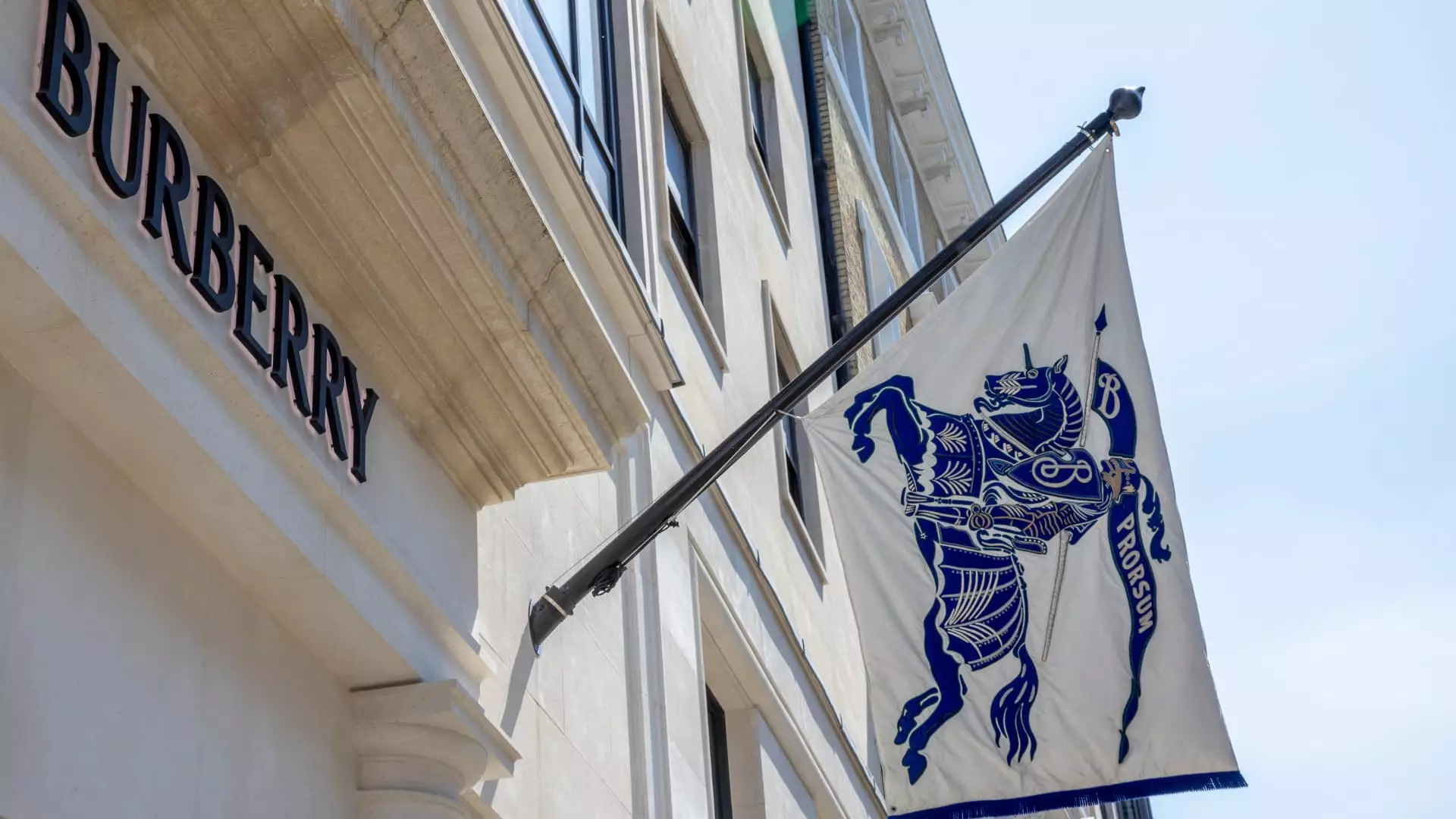Burberry, a longstanding emblem of British luxury, finds itself grappling with a complex set of challenges that now necessitate significant organizational changes. On Wednesday, the brand announced plans that could potentially lead to a staggering reduction of around 1,700 roles worldwide as part of its ongoing turnaround strategy, slated for completion by 2027. This move could be seen as an inevitable yet regretful concession to the harsher realities of the luxury market landscape. While restructuring is often a necessary response to unease within a company, one can’t help but feel disheartened at the human cost entailed in such decisions.
Sales Numbers Reveal Growing Pressure
In its fiscal fourth quarter, Burberry’s sales declined by 6%, narrowly beating analysts’ projections of a 7% drop. Overall, their fiscal year revenues fell 12%, slightly better than the anticipated 13% decline. With total revenue clocking in at £2.461 million, one must question whether these numbers truly signal stability or merely a writhing company trying to keep afloat. All geographic regions underperformed; the Asia-Pacific market—previously a symbol of luxury growth—now burdens the brand with crushing expectations. Meanwhile, the Americas, once a bright spot, surrendered to a 4% loss in the closing quarter, signaling that the brand’s previous optimism appears to be unwarranted and misplaced.
The Macroeconomic Influence of Geopolitical Tensions
Compounding these issues is the turbulent macroeconomic environment, exacerbated by geopolitical uncertainties that have sent tremors through global markets. Burberry’s CEO, Joshua Schulman, attempted to strike a hopeful chord by asserting that the luxury house’s “best days are ahead.” However, his optimism feels misguided without robust strategies to counteract the unpredictable socio-political landscape. The tariff risks looming over the U.S. market exemplify the precarious situation that many brands like Burberry now face. As nations navigate complex international relations, luxury brands must remain agile, yet it appears Burberry is finding it challenging to adapt.
Resilience or Hesitation? The Future of Burberry
While it is always admirable for a company to express confidence in its turnaround efforts, one must question whether Burberry’s leadership is simply peddling hope in the face of significant resistance. The luxury industry inherently thrives on perception, yet how can potential customers regard Burberry as a desirable choice when the narrative is shrouded in instability? The lack of clear guidance regarding the effects of macroeconomic factors raises concerns about the brand’s strategic direction.
In a rapidly evolving luxury sector, marked by shifting consumer preferences and increased competition from emerging fast fashion brands, Burberry’s organizational changes could either serve as a crucial pivot point or an indication of deeper rotting at the core. The luxurious aura surrounding the brand is at stake, yet it craves more than stratagems regarding cost reductions and staff layoffs. What Burberry needs is a comprehensive reevaluation of its identity, a rejuvenation that connects it back to its roots while appealing to the newer, more conscious luxury consumer. The road ahead is fraught with peril, but it also presents an opportunity for transformative growth—if handled adeptly.

